
AAPS Journal
Scope & Guideline
Transforming Insights into Impactful Pharmaceutical Discoveries.
Introduction
Aims and Scopes
- Pharmacokinetics and Pharmacodynamics:
Research related to the absorption, distribution, metabolism, and excretion (ADME) of drugs, including modeling approaches to predict pharmacokinetic behavior in various populations. - Drug Delivery Systems:
Studies focused on novel drug delivery mechanisms, including nanotechnology, liposomes, and other innovative formulations aimed at improving therapeutic efficacy and patient compliance. - Biopharmaceutics and Drug Formulation:
Exploration of drug formulation strategies, dissolution testing, and the impact of physicochemical properties on drug absorption and bioavailability. - Regulatory Science and Compliance:
Research that informs regulatory practices, including bioanalytical method validation, immunogenicity assessment, and guidance for generic drug development. - Translational Medicine and Therapeutics:
Work that bridges preclinical studies to clinical applications, emphasizing model-informed drug development and the assessment of therapeutic efficacy. - Immunogenicity and Biologics:
Studies on the immunogenicity of therapeutic proteins and monoclonal antibodies, including the development of assays for anti-drug antibodies.
Trending and Emerging
- Physiologically Based Pharmacokinetic (PBPK) Modeling:
There is a significant increase in studies utilizing PBPK modeling to predict drug behavior across various populations, including pediatrics and specific patient groups, highlighting the trend towards individualized medicine. - Nanotechnology in Drug Delivery:
Research on nanocarriers and nanomedicine is rapidly expanding, focusing on their applications in targeted delivery and enhanced therapeutic profiles, particularly in oncology and chronic diseases. - Regulatory Science Innovations:
Emerging themes in regulatory science, including comprehensive assessments of immunogenicity and biosimilar development, are becoming increasingly relevant as the pharmaceutical landscape evolves. - Model-Informed Drug Development:
An uptick in the use of model-informed approaches to streamline drug development processes is evident, emphasizing the importance of integrating data-driven strategies to enhance decision-making. - Integrated Multi-Disciplinary Approaches:
Studies that combine pharmacology, toxicology, and biopharmaceutics to address complex drug development challenges are on the rise, reflecting a holistic view of drug therapy. - Advanced Drug Formulation Techniques:
Innovative formulation strategies, including the use of biodegradable polymers and smart drug delivery systems, are gaining prominence as researchers seek to improve drug solubility and stability.
Declining or Waning
- Traditional Pharmacokinetic Models:
There appears to be a waning interest in classical pharmacokinetic models that do not incorporate complex systems or population variability, as newer, more sophisticated modeling approaches gain traction. - Basic Drug Formulation Techniques:
Research specifically focused on conventional formulation techniques is becoming less prominent, likely overshadowed by more advanced strategies such as nanotechnology and targeted delivery systems. - In Vitro Testing without Translational Evidence:
Studies that solely rely on in vitro testing without robust translational frameworks or clinical correlation are less frequently published, as the emphasis shifts toward more integrative approaches. - Single-Drug Focus Studies:
Investigations centered around single-drug interactions are declining in favor of multifactorial studies that consider drug combinations and their interactions in complex biological systems.
Similar Journals
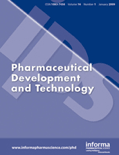
PHARMACEUTICAL DEVELOPMENT AND TECHNOLOGY
Shaping the Future of Pharmaceutical Practices and Education.PHARMACEUTICAL DEVELOPMENT AND TECHNOLOGY is a premier journal published by Taylor & Francis Ltd that focuses on the latest advancements and innovations in the field of pharmaceutical science. Established in 1996, this journal has evolved to encompass a wide array of interdisciplinary studies relevant to drug development, formulation technology, and delivery systems, serving as a platform for researchers and professionals to share groundbreaking findings. With an impressive impact factor and ranked in both Q2 in Pharmaceutical Science and Q3 in Medicine (miscellaneous), it positions itself among the top-tier journals in pharmacology and toxicology. The journal's insights are critical for scholars and practitioners aiming to enhance therapeutic efficacy and safety. Access options for the content remain traditional, thus supporting a comprehensive approach to scientific literature. Throughout its converged years up to 2024, PHARMACEUTICAL DEVELOPMENT AND TECHNOLOGY continues to play a vital role in shaping pharmaceutical education and practice.

Pharmaceutics
Fostering collaboration in the world of pharmaceutical sciences.Pharmaceutics is a prestigious journal published by MDPI, specializing in the field of pharmaceutical sciences. With its Open Access model established in 2010, it promotes the dissemination of cutting-edge research, catering to a global audience of researchers, professionals, and students alike. Based in Switzerland, the journal has rapidly gained recognition, currently holding an impressive Q1 ranking in the pharmaceutical science category for 2023 and achieving a Scopus ranking of #32 out of 183 in the domain of Pharmacology, Toxicology, and Pharmaceutics, placing it in the 82nd percentile. The journal's objectives include advancing knowledge in drug formulation, delivery systems, and therapeutic applications, ensuring that published works contribute significantly to both academic discourse and practical applications in the pharmaceutical industry. As part of its commitment to excellence, Pharmaceutics welcomes high-quality manuscripts that inspire innovation and foster collaboration in this vital field.
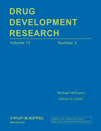
DRUG DEVELOPMENT RESEARCH
Illuminating the path to novel therapeutics and safety assessments.DRUG DEVELOPMENT RESEARCH is a premier interdisciplinary journal published by Wiley, focusing on the latest advancements in drug discovery, pharmacology, and toxicology. With an ISSN of 0272-4391 and an E-ISSN of 1098-2299, this esteemed publication has been a cornerstone in the field since its inception in 1981 and continues to provide cutting-edge research until 2024. Its rigorous peer-review process and strategic placement in Q2 of the Drug Discovery category, as well as ranking #60 out of 157 in Scopus, underscore the journal's relevance and influence, boasting a respectable 62nd percentile ranking. While the journal does not currently offer open access, it remains a vital resource for researchers, professionals, and students seeking to expand their knowledge on the processes of drug development, identifying new therapeutic targets, and assessing the efficacy and safety of novel compounds. Situated in Hoboken, NJ, this journal stands at the forefront of pharmaceutical innovation, making significant contributions to the advancement of medical science.
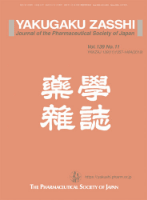
YAKUGAKU ZASSHI-JOURNAL OF THE PHARMACEUTICAL SOCIETY OF JAPAN
Advancing pharmaceutical knowledge, one article at a time.YAKUGAKU ZASSHI - JOURNAL OF THE PHARMACEUTICAL SOCIETY OF JAPAN, published by the Pharmaceutical Society of Japan, is a key academic journal dedicated to advancing the field of pharmaceutical sciences. Established in 1961 and set to contribute until 2024, this journal publishes original research articles, reviews, and clinical studies that encompass a wide spectrum of topics within pharmacology, toxicology, and pharmaceutics. Although the journal operates under a traditional subscription model, it maintains a recognized reputation with an impact factor that is steadily aligned within its category quartiles—ranking Q3 in Pharmaceutical Science and Q4 in Pharmacology as of 2023. With Scopus rankings reflecting its competitive standing, YAKUGAKU ZASSHI serves as a vital resource for researchers, professionals, and students looking to engage with innovative findings and broaden their understanding of pharmaceutical methodologies and research practices. With a current focus on bridging scientific research with real-world applications, it seeks to foster collaboration and knowledge sharing within the pharmaceutical community.
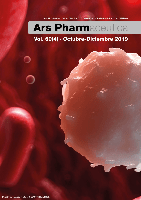
Ars Pharmaceutica
Fostering collaboration for transformative pharmaceutical insights.Ars Pharmaceutica is a distinguished open-access journal published by UNIV GRANADA, EDITORIAL, that has been at the forefront of pharmaceutical sciences since its establishment. With ISSN 0004-2927 and E-ISSN 2340-9894, this journal aims to disseminate high-quality research in pharmacology, toxicology, and pharmaceutics, contributing to the advancement of the field. With a historical scope that spans from 1980 to 2017, it has played a pivotal role in shaping the discourse surrounding pharmaceutical science and its intersection with the arts and humanities. Although currently ranked within the 13th percentile in Scopus for Pharmaceutical Science and the 11th percentile for History and Philosophy of Science, Ars Pharmaceutica continues to uphold its commitment to academic excellence and innovation. By providing a platform for open-access research, it encourages collaboration and knowledge sharing among researchers, professionals, and students, thus enhancing the broader understanding of pharmaceutical developments and their societal implications.
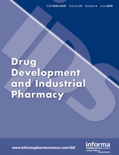
DRUG DEVELOPMENT AND INDUSTRIAL PHARMACY
Exploring the Frontiers of Drug DevelopmentDrug Development and Industrial Pharmacy is a prestigious journal published by Taylor & Francis Ltd, focusing on the critical field of pharmaceutical sciences. With an ISSN of 0363-9045 and an E-ISSN of 1520-5762, the journal has been an essential resource for researchers and professionals since its inception in 1974. It occupies a crucial niche within Drug Discovery, Organic Chemistry, and Pharmaceutical Science, currently ranked in the second and third quartiles, reflecting its solid contribution to the field. The journal encompasses a wide array of topics, including drug development processes, formulation, and industrial manufacturing alongside cutting-edge research in pharmacology and toxicology. With a commendable Scopus ranking demonstrating high relevance—ranked #44 in Pharmaceutical Science—it serves as a vital forum for academia and industry to share innovative findings and methodologies. While it does not offer open access, the journal remains an invaluable resource for those seeking to advance their knowledge and enhance their research in pharmaceutical development.

Istanbul Journal of Pharmacy
Shaping the future of pharmacy through cutting-edge research.Istanbul Journal of Pharmacy, published by Istanbul University, Faculty of Pharmacy, is a pivotal platform dedicated to the advancement of pharmaceutical sciences and technology. This journal serves as a vital resource for researchers, professionals, and students alike, seeking to disseminate cutting-edge research, reviews, and innovative methodologies within the pharmaceutical discipline. With a commitment to open access, the journal aims to foster a collaborative environment that promotes information sharing and scholarly discourse. The Istanbul Journal of Pharmacy invites submissions that delve into diverse topics ranging from drug formulation to pharmacokinetics, ensuring that readers are equipped with the latest insights and discoveries in the field. This journal is positioned to enhance scientific communication within the pharmaceutical community and support the continuous evolution of pharmacy practice and education globally.
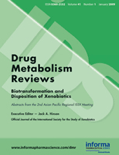
DRUG METABOLISM REVIEWS
Pioneering insights into therapeutic applications.Drug Metabolism Reviews is a premier journal dedicated to the dissemination of scientific research and reviews in the field of pharmacology, toxicology, and pharmaceutics, published by Taylor & Francis Ltd. With its inception dating back to 1972, this journal has consistently provided an authoritative platform for scholars and professionals from diverse disciplines to explore the intricate mechanisms of drug metabolism and their implications for therapeutic applications. The journal enjoys commendable rankings, placing in the Q2 quartile for Pharmacology (medical) and the Q1 quartile in the miscellaneous subfield, signaling its significant impact within the community. Notably, it is recognized within the top 96th percentile in General Pharmacology, Toxicology and Pharmaceutics, affirming its esteemed position among academic publications. Although it operates under a subscription model, Drug Metabolism Reviews remains an essential resource for researchers, professionals, and students seeking to deepen their understanding of drug interactions, safety, and efficacy. The insights shared within its pages contribute vital knowledge to the global discourse on drug development and personalized medicine.

International Journal of Pharmaceutical Investigation
Driving Innovation in Drug Development and FormulationInternational Journal of Pharmaceutical Investigation, published by INPHARM ASSOC, PHCOG NET, is a premier platform dedicated to advancing the field of pharmaceutical sciences. With the ISSN 2230-973X and E-ISSN 2230-9713, this journal serves as a vital resource for researchers, professionals, and students focused on drug development, formulation, and efficacy. By fostering a rich discourse on innovative pharmaceutical practices and research breakthroughs, the journal plays a critical role in enhancing global health outcomes through groundbreaking scholarly work. The absence of open access allows for selective dissemination of high-quality content, promoting rigorous peer-review processes that uphold academic integrity. Featuring articles that span a diverse range of topics within pharmaceutical sciences, the International Journal of Pharmaceutical Investigation is committed to supporting the ongoing evolution of this dynamic field, making it an essential read for anyone engaged in pharmaceutical research and development.

PHARMACEUTICAL RESEARCH
Pioneering research that transforms healthcare and therapeutics.PHARMACEUTICAL RESEARCH, published by SPRINGER/PLENUM PUBLISHERS, is a leading journal in the ever-evolving field of pharmaceutical sciences. With an ISSN of 0724-8741 and an E-ISSN of 1573-904X, this journal has established itself as a critical hub for disseminating innovative research from 1984 to 2024. The journal holds impressive rankings in prominent categories, including Q2 in Biotechnology and Q2 in Pharmaceutical Science, reflecting its robust impact on the global scientific community. The journal aims to provide researchers, professionals, and students with high-quality articles that contribute significantly to the advancement of drug development and medicinal applications. Although it does not currently offer Open Access options, its rigorous peer-review process ensures that only the highest caliber research is published, making it a valuable resource for those seeking to stay at the forefront of pharmaceutical innovation.